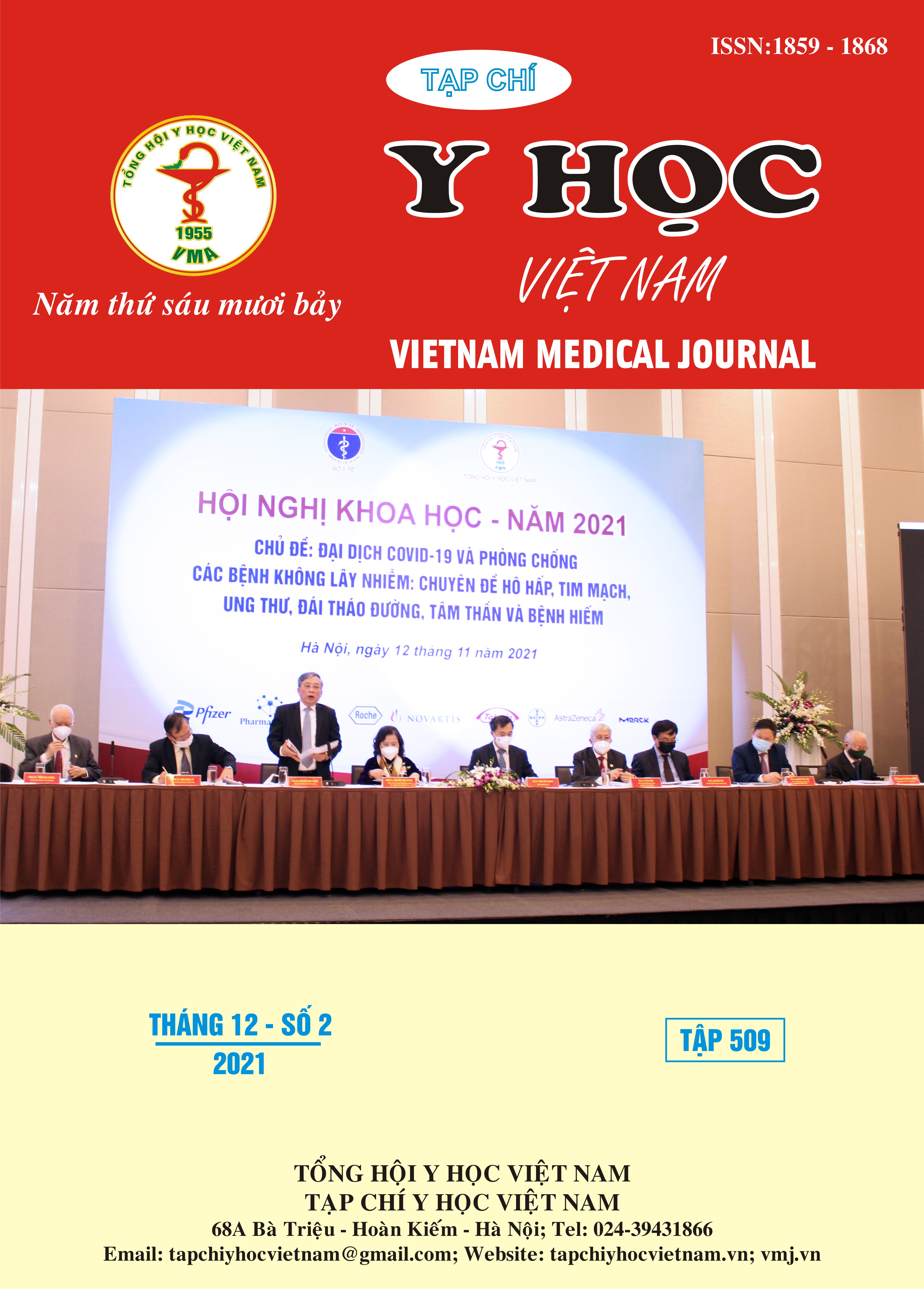LOW MOLECULAR WEIGHT HEPARIN COMPARED TO ANTICOAGULANT RIVAROXABAN FOR THE PREVENTION OF VENOUS THROMBOEMBOLISM IN POSTOPERATIVE PATIENT
Main Article Content
Abstract
Objectives: To compare the results of postoperative venous thromboembolism prophylaxis with low molecular weight heparin (LMWH) and rivaroxaban. Subjects and methods: The study was design retrospectively, 30,010 surgical patients with >18 years of age were recruited from January 1, 2017 to September 31, 2018 to received anticoagulation with LMWH or rivaroxaban. Of these, 25.479 patients were prevented by LMWH and 4.531 patients were prevented by rivaroxaban. Result: The number of postoperative VTE patient accounting for 0,6% in LMWH group (146/25479), which was higher than the figure of rivaroxaban group of 0,3% (15/4531) and the proportion of patients developing VTE in 90 days after hospital discharge of the LMWH group was 0,5% (138/25479), compared to rivaroxaban group with percentage of 0,3% (14/4531).The rate of developing bleeding complications were higher in LMWH prophylactic group with 6,2% (1585/25479) in comparison with rivaroxaban group with 4,5% (206/4531). The difference was statistically significant with p < 0.05. Conclusion: Rivaroxaban reduced the rate of VTE recurrence and did not increase the risk of bleeding complication in postoperative patients compared with LMWH, the difference was statistically significant.
Article Details
Keywords
Rivaroxaban, Low molecular weight heparin, surgery
References
2. Bui My Hanh, Hung Duong Duc, Nguyen Hoang Hiep, Vinh Pham Quang et al. (2019), "Frequency and risk factor of lower-limb Deep Vein Thrombosis After major orthopedic surgery in Viet Nam patients", Open Access Macedonian Journal of Medical Sciences, 7(24), 125-129.
3. My Hanh Bui, Quang Cuong Le, Duc Hung Duong et al. (2020), "Economic burden of venous thromboembolism in surgical patients: A propensity score analysis from the national claims database in Vietnam", Plos One, 15(4).
4. My Hanh Bui, Nguyen Truong Son, Pham Thanh Viet et al. (2019), "Oral Rivaroxaban Versus Standard Therapy in Acute Venous Thromboembolism Treatment for Vietnamese Patients", Open Access Maced J Med Sci, 7(24), 4255-4259.
5. Anhua Long, Lihai Zhang and Yingze Zhang (2014), "Efficacy and safety of rivaroxaban versus low-molecular-weight heparin therapy in patients with lower limb fractures", J Thromb Thrombolysis, 38(3), 299-305.
6. Hai-Feng Huang, Shan-Shan Li and Xian-Teng Yang (2018), "Rivaroxaban versus enoxaparin for the prevention of venous thromboembolism after total knee arthroplasty", Medicine, 97(48), 13465.
7. Sean T Duggan (2012), "Rivaroxaban: a review of its use for the prophylaxis of venous thromboembolism after total hip or knee replacement surgery", Am J Cardiovasc Drugs, 12(1), 57-72.
8. Gomez-Outes A, Terleira-Fernandez AI and Suarez-Gea ML (2012), "Dabigatran, rivaroxaban, or apixaban versus enoxaparin for thromboprophylaxis after total hip or knee replacement: systematic review, meta-analysis, and indirect treatment comparisons", BMJ, 344.


